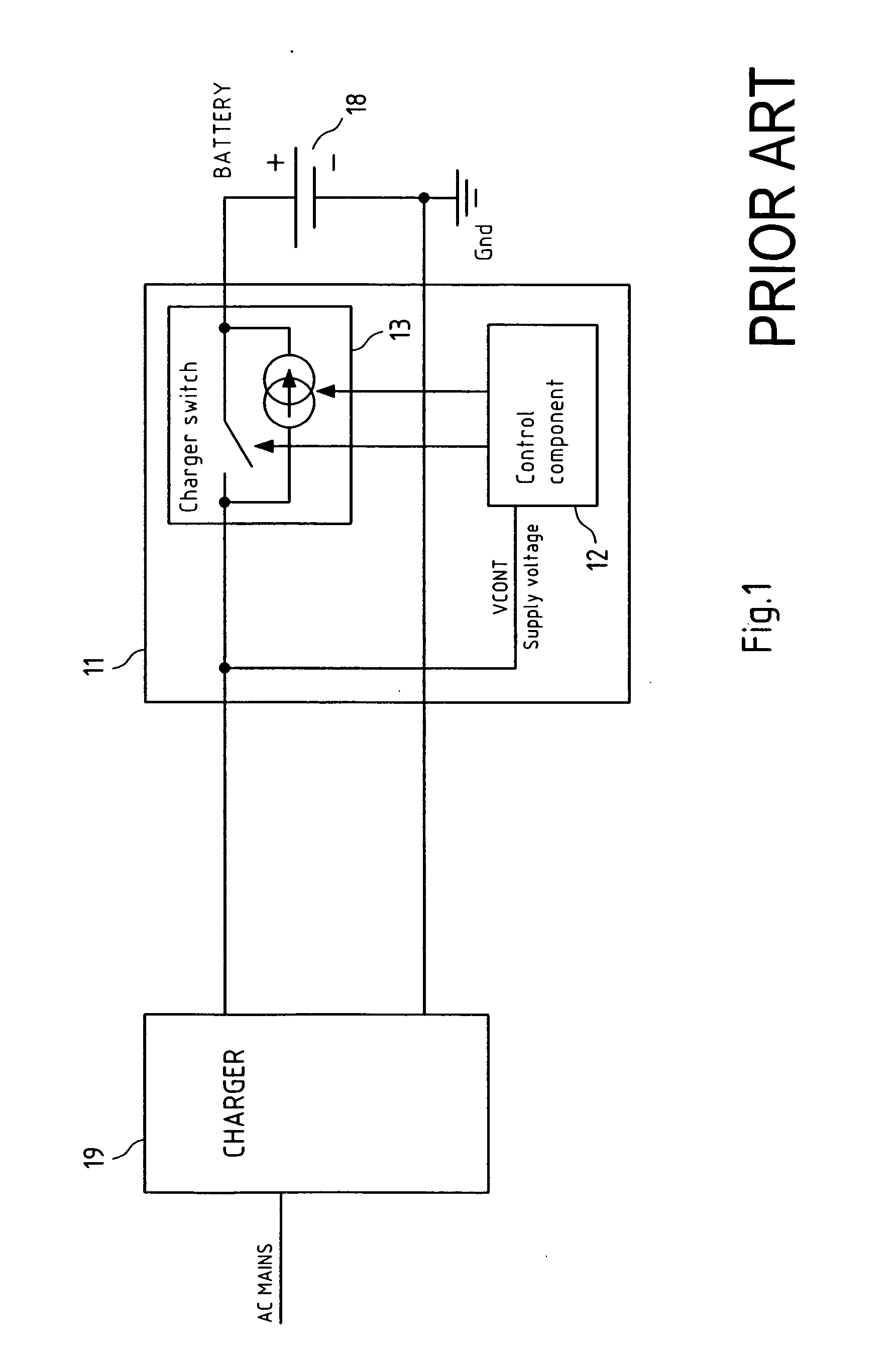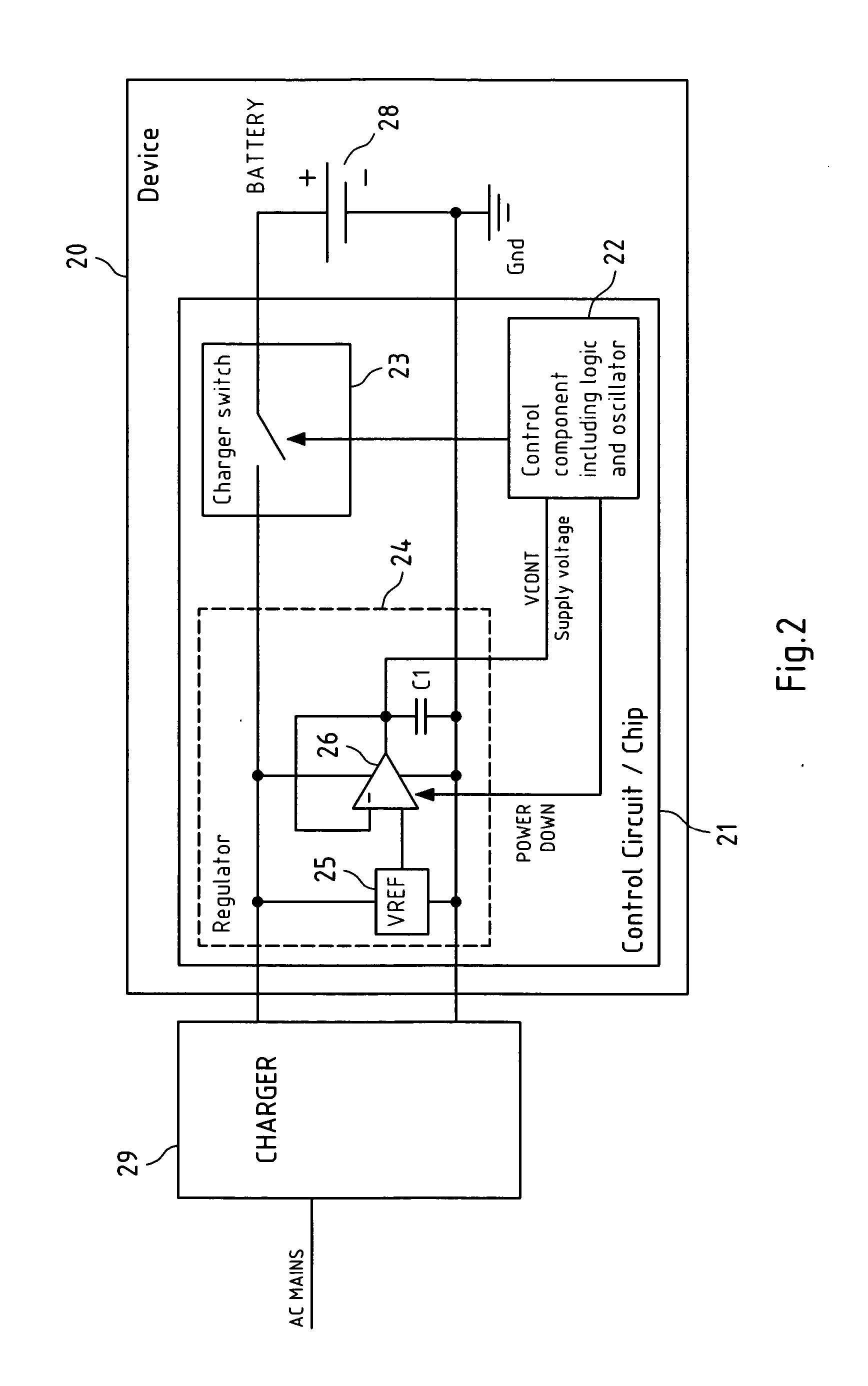Battery charging control
a charging control and battery technology, applied in the direction of electric vehicles, safety/protection circuits, transportation and packaging, etc., can solve the problems of high thermal dissipation, control components cannot maintain their functionality, and the charging control is difficult to realize, so as to achieve low thermal dissipation, the battery is empty, and the charge is reliably charged
- Summary
- Abstract
- Description
- Claims
- Application Information
AI Technical Summary
Benefits of technology
Problems solved by technology
Method used
Image
Examples
Embodiment Construction
[0037]FIG. 2 is a schematic block diagram of a system for charging a rechargeable battery. In this system, a control component of a battery charging control circuit is provided with a supply voltage in accordance with an embodiment of the invention.
[0038] The system comprises an electronic device 20 which is supplied with power by a rechargeable battery 28. The system further comprises a charger 29 for charging the battery 28. For charging the battery 28, the charger 29 is connected on the one hand to the AC mains, and on the other hand to the electronic device 20.
[0039] The electronic device 20, which can be for example a mobile phone, comprises besides the rechargeable battery 28 a battery charging control circuit 21. The battery charging control circuit 21 may be integrated on a chip and includes a control component 22, a charger switch 23 and a linear regulator 24. The control component 22 comprises a logic realizing a state machine, which is run by a clock signal. The clock s...
PUM
 Login to View More
Login to View More Abstract
Description
Claims
Application Information
 Login to View More
Login to View More - R&D
- Intellectual Property
- Life Sciences
- Materials
- Tech Scout
- Unparalleled Data Quality
- Higher Quality Content
- 60% Fewer Hallucinations
Browse by: Latest US Patents, China's latest patents, Technical Efficacy Thesaurus, Application Domain, Technology Topic, Popular Technical Reports.
© 2025 PatSnap. All rights reserved.Legal|Privacy policy|Modern Slavery Act Transparency Statement|Sitemap|About US| Contact US: help@patsnap.com



